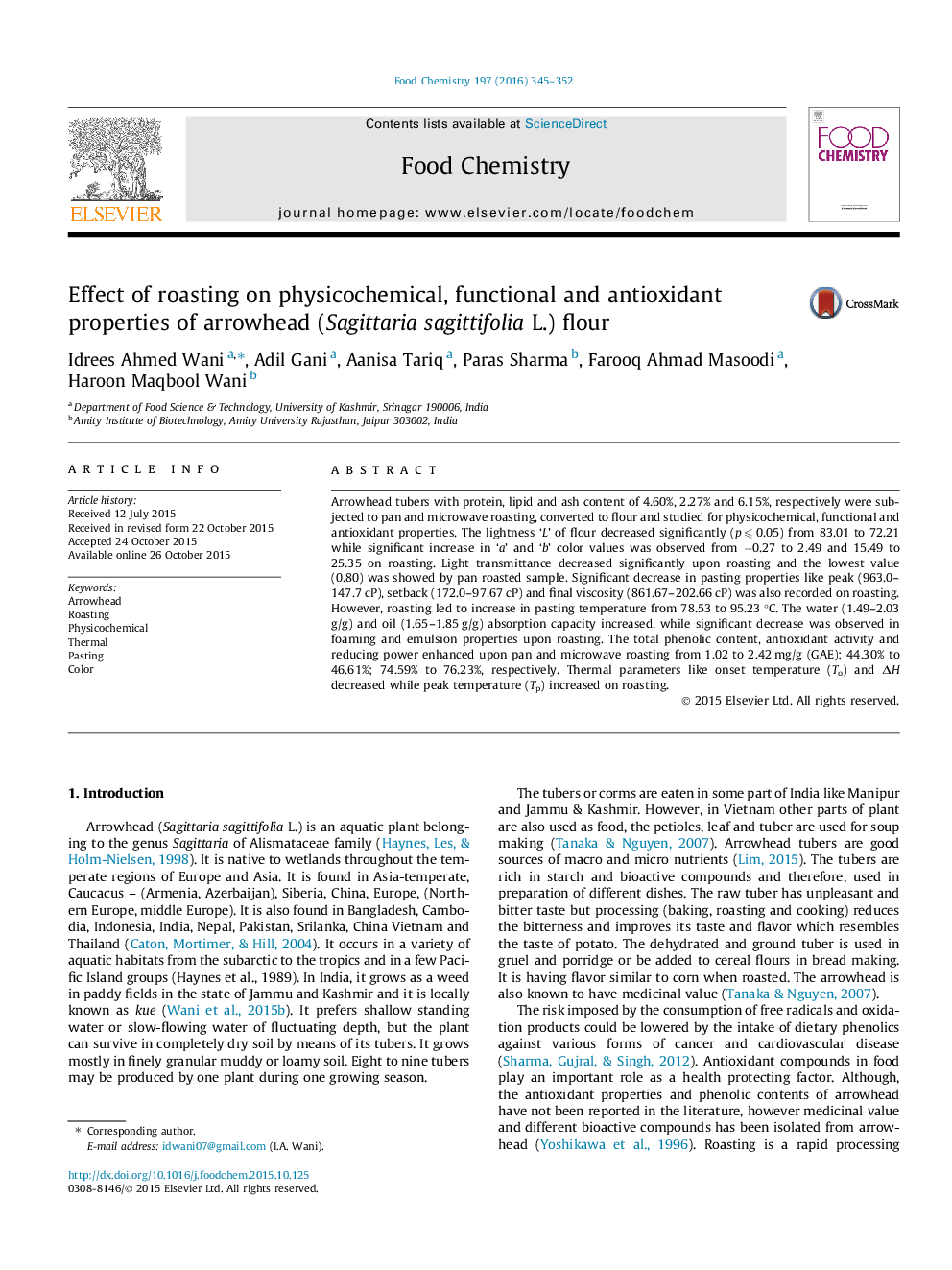| Article ID | Journal | Published Year | Pages | File Type |
|---|---|---|---|---|
| 1183475 | Food Chemistry | 2016 | 8 Pages |
•Color value ‘L’ decreased while ‘a’ and ‘b’ values increased on roasting.•Roasting of arrowhead led to decrease in foaming and emulsification properties.•Antioxidant properties increased significantly on roasting.•Pasting properties decreased significantly on roasting.
Arrowhead tubers with protein, lipid and ash content of 4.60%, 2.27% and 6.15%, respectively were subjected to pan and microwave roasting, converted to flour and studied for physicochemical, functional and antioxidant properties. The lightness ‘L’ of flour decreased significantly (p ⩽ 0.05) from 83.01 to 72.21 while significant increase in ‘a’ and ‘b’ color values was observed from −0.27 to 2.49 and 15.49 to 25.35 on roasting. Light transmittance decreased significantly upon roasting and the lowest value (0.80) was showed by pan roasted sample. Significant decrease in pasting properties like peak (963.0–147.7 cP), setback (172.0–97.67 cP) and final viscosity (861.67–202.66 cP) was also recorded on roasting. However, roasting led to increase in pasting temperature from 78.53 to 95.23 °C. The water (1.49–2.03 g/g) and oil (1.65–1.85 g/g) absorption capacity increased, while significant decrease was observed in foaming and emulsion properties upon roasting. The total phenolic content, antioxidant activity and reducing power enhanced upon pan and microwave roasting from 1.02 to 2.42 mg/g (GAE); 44.30% to 46.61%; 74.59% to 76.23%, respectively. Thermal parameters like onset temperature (To) and ΔH decreased while peak temperature (Tp) increased on roasting.
